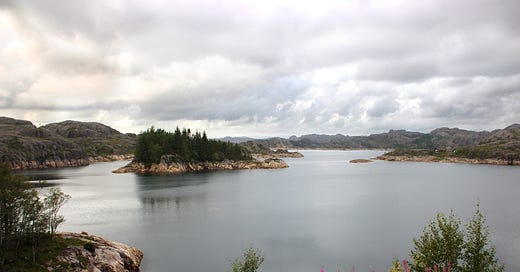The Carbon Accounting Shell Game: Why Current Net Zero Calculations Don't Add Up
New research reveals fundamental flaws in how countries calculate their path to net zero, suggesting current approaches may fall short of addressing climate change
Breaking the Ice:
A significant report published in Nature examines the assumptions underlying current net zero emissions strategies. The study, “Geological Net Zero and the need for disaggregated accounting for carbon sinks,” led by scientists from the University of Oxford and the University of Melbourne, analyzes how existing carbon accounting methods assess natural carbon sinks and highlights the concept of "geological net zero" – a framework that distinguishes between different types of carbon storage based on their permanence and stability.
The researchers examine how countries' net zero pledges often rely on temporary carbon storage solutions, particularly forests, while not fully accounting for the difference between geological carbon (released through fossil fuel burning) and biological carbon storage (captured by trees and soil). This distinction matters because biological storage operates differently from geological storage, raising questions about current climate strategies.
Quick Melt:
The study identifies key issues in current carbon accounting approaches. The researchers describe what they characterize as a "false equivalence" between geological emissions and biological storage in current accounting methods. This has led many countries to incorporate forest-based carbon offsets into their climate plans without fully accounting for the differences between temporary and permanent carbon storage.
The researchers propose a new accounting framework that would separately track geological emissions and biological storage. They argue that this disaggregated approach would provide a clearer picture of progress toward climate goals. This distinction is important because strategies that appear effective under current accounting methods may not deliver the intended long-term results.
The Thaw:
How is Carbon Storage Calculated and What is Geological Net Zero (GNZ)? AccumulationZone Explains.
Geological carbon represents carbon that has been locked away in fossil fuels over millions of years through natural processes. When extracted and burned, this carbon enters what scientists call the "active" carbon cycle - the ongoing exchange of carbon between the atmosphere, oceans, soil, and living things. In contrast, biological carbon storage, such as that found in forests and soils, already operates as part of this active cycle.
GNZ specifically focuses on achieving a balance between geological carbon sources and sinks. According to the Carbon Balance Project, this means that for carbon accounting purposes, the amount of carbon extracted from geological reservoirs (primarily through fossil fuel use) must be matched by an equal amount of carbon returned to geological storage. This differs crucially from traditional net zero approaches in several ways.
The first is storage permanence. GNZ specifically requires carbon to be stored in stable, geological formations rather than in temporary biological sinks. This might involve technologies like Carbon Capture and Storage (CCS), where CO2 is injected into suitable geological formations. The second is accounting precision. GNZ demands separate tracking of three distinct carbon flows: geological emissions from fossil fuel use, carbon capture in natural sinks like forests and oceans, and carbon stored permanently in geological formations. The third and final difference is historical context. The framework acknowledges the need to account for cumulative historical emissions, recognizing that past geological carbon releases continue to influence current climate dynamics.
The researchers identify specific challenges in current carbon accounting practices. Many countries and organizations count biological carbon storage (like forest growth) as equivalent to geological carbon emissions in their net zero calculations. However, this creates what the study's authors deem a "false equivalence." While forests and other natural systems can temporarily store carbon, they cannot provide the same level of permanent storage as geological formations.
This distinction becomes particularly important when evaluating climate strategies. For example, under current accounting rules, a country might offset its fossil fuel emissions by protecting or expanding forests. While forest preservation is valuable for many reasons, the study argues this approach doesn't adequately address the fundamental problem of adding new geological carbon to the active carbon cycle.
The research also highlights the need for technological development to achieve GNZ. This includes expanding carbon capture and storage capabilities, developing CO2 transport systems, and creating the infrastructure needed for long-term geological storage. These requirements add another layer of complexity to climate planning, as they involve significant investment in new technologies and infrastructure.
Final Thoughts
This research represents a crucial evolution in our understanding of carbon accounting and climate strategy. By highlighting the need for disaggregated accounting of different carbon sinks, it challenges policymakers and businesses to develop more sophisticated and effective approaches to achieving genuine climate stability. As we move forward, this new framework could help ensure that net zero pledges translate into meaningful climate action rather than just accounting exercises.


